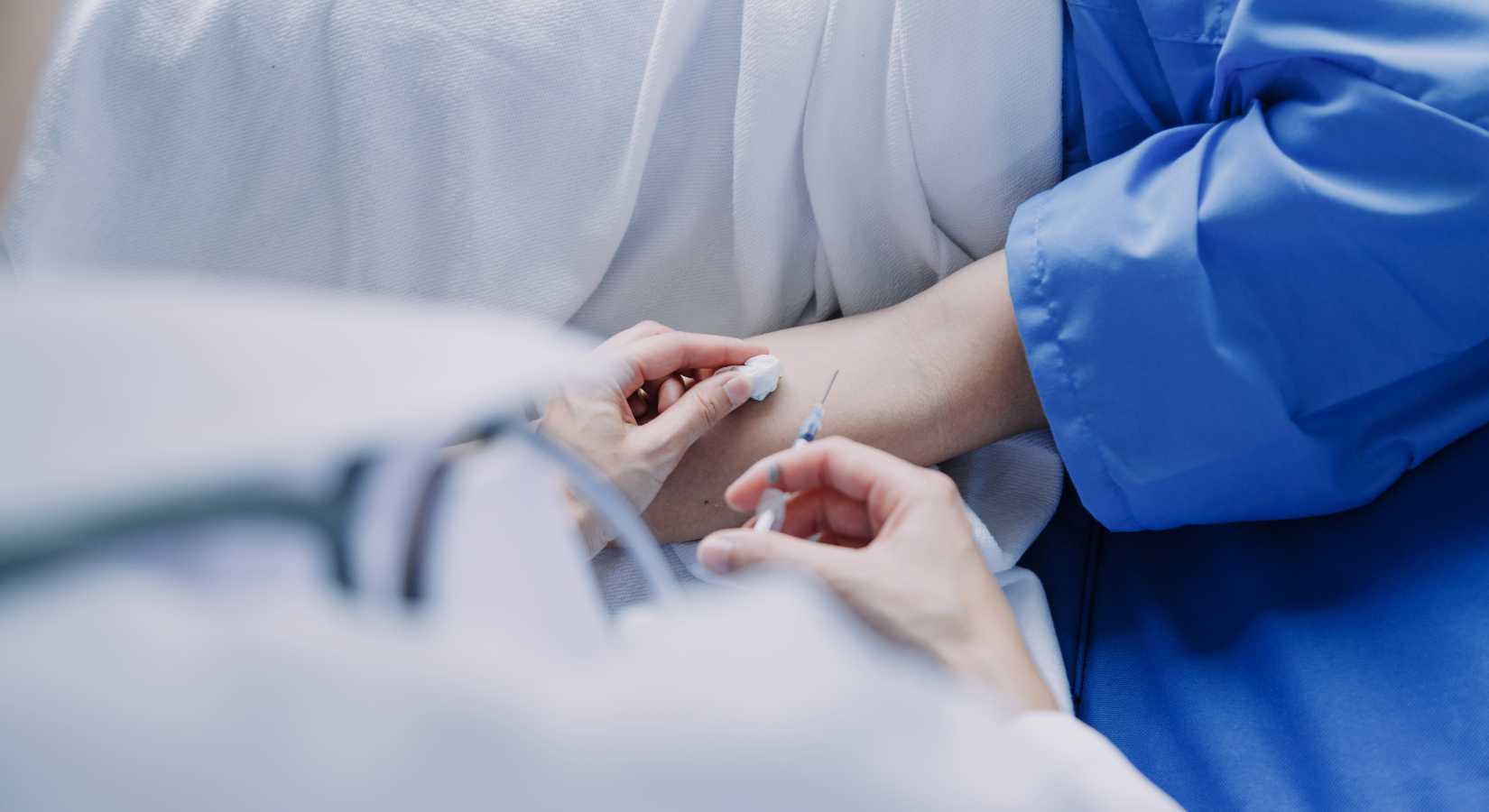Marcie Bowers og Erica Andersson, en lege/kirurg og en psykolog høyt oppe i trans-samfunnet i USA, står nå frem og advarer mot medisinsk/kirurgisk transisjon (såkalt kjønnskorrigerende behandling) av mindreårige. Det skrivver forfatteren Abigail Shrier.
I nesten et tiår har fortroppen til trans-rettighetsbevegelsen, det vil si leger, aktivister, kjendiser og transseksuelle påvirkere-definert grensene for den nye ortodoksien rundt trans medisinsk behandling: Hva er sant, hva er usant, hvilke spørsmål kan og ikke kan stilles.
De sa at det var helt trygt å gi barn helt ned til ni pubertetsblokkere og insisterte på at effekten av disse blokkene var “helt reversibel.” De sa at det var medisinsk fagpersons jobb å hjelpe mindreårige med å “endre” kjønn. De sa at det ikke var deres jobb å stille spørsmål ved fornuften ved dette, og at alle som gjorde det – inkludert foreldre – sannsynligvis var transfobiske. De sa at enhver bekymring for en sosial smitte blant tenåringsjenter var tull. Og de sa aldri noe om den klare muligheten for at blokkering av pubertet, kombinert med hormoner på tvers av kjønn, kan hemme et normalt sexliv.
Deres allierte i media og Hollywood rapporterte historier og skapte en forståelse som bekreftet denne ortodoksien. Alle som våget å være uenige eller gå fra noen av de grunnleggende ideene, inkludert unge kvinner som offentlig gikk tilbake til sitt biologiske kjønn, ble betegnet som hatefulle og anklaget for å ha skadet barn.
Men den nye ortodoksien har gått for langt, ifølge to av de mest fremtredende leverandørene innen transseksuell medisin: Dr. Marci Bowers, en verdenskjent vaginoplastisk spesialist som opererte reality-tv-stjernen Jazz Jennings; og Erica Anderson, klinisk psykolog ved University of California San Francisco’s Child and Adolescent Gender Clinic.
In the course of their careers, both have seen thousands of patients. Both are board members of the World Professional Association for Transgender Health (WPATH), the organization that sets the standards worldwide for transgender medical care. And both are transgender women.
Earlier this month, Anderson told me she submitted a co-authored op-ed to The New York Times warning that many transgender healthcare providers were treating kids recklessly. The Times passed, explaining it was “outside our coverage priorities right now.”
Over the past few weeks, I have spoken at length to both women about the current direction of their field and where they feel it has gone wrong. On some issues, including their stance on puberty blockers, they raised concerns that appear to question the current health guidelines set by WPATH — which Bowers is slated to lead starting in 2022.
WPATH, for instance, recommends that for many gender dysphoric and gender non-conforming kids, hormonal puberty suppression begin at the early stages of puberty. WPATH has also insisted since 2012 that puberty blockers are “fully reversible interventions.”
When I asked Anderson if she believes that psychological effects of puberty blockers are reversible, she said: “I’m not sure.” When asked whether children in the early stages of puberty should be put on blockers, Bowers said: “I’m not a fan.”
When I asked Bowers if she still thought puberty blockers were a good idea, from a surgical perspective, she said: “This is typical of medicine. We zig and then we zag, and I think maybe we zigged a little too far to the left in some cases.” She added “I think there was naivete on the part of pediatric endocrinologists who were proponents of early [puberty] blockade thinking that just this magic can happen, that surgeons can do anything.”
I asked Bowers whether she believed WPATH had been welcoming to a wide variety of doctors’ viewpoints — including those concerned about risks, skeptical of puberty blockers, and maybe even critical of some of the surgical procedures?
“There are definitely people who are trying to keep out anyone who doesn’t absolutely buy the party line that everything should be affirming, and that there’s no room for dissent,” Bowers said. “I think that’s a mistake.”
Bowers is not only among the most respected gender surgeons in the world but easily one of the most prolific: she has built or repaired more than 2,000 vaginas, the procedure known as vaginoplasty. She rose to celebrity status appearing on the hit reality-television show “I Am Jazz,” which catalogues and choreographs the life of Jazz Jennings, arguably the country’s most famous transgender teen.
In January 2019, Jeanette Jennings threw her famous daughter a “Farewell to Penis” party. Over a million viewers looked in on guests feasting on meatballs and miniature wieners in the Jennings’ Mediterranean-style Florida home. Family and friends cheered as Jazz sliced into a penis-shaped cake. The rather complicated upcoming procedure came to seem as little more than a Sweet Sixteen.
By that point, Jazz was already Time magazine’s top 25 most influential teen, the co-author of a bestselling children’s book and the inspiration for a plastic doll. She had served as youth ambassador to the Human Rights Campaign, and she had about one million Instagram followers. Hers was no longer just a personal story but an advertisement for a lifestyle and an industry.
On the day of the procedure — dutifully recorded for Instagram — Jazz’s sister, Ari, teasingly wiggled a sausage in front of the camera. As Jazz was about to be wheeled into the operating room, she snapped her fingers and said, “Let’s do this!”
The vaginoplasty she underwent is what surgeons call a “penile inversion,” in which surgeons use the tissue from the penis and testicles to create a vaginal cavity and clitoris. With grown men, a penile inversion was eminently doable. With Jazz, it was much more difficult.
Like thousands of adolescents in America treated for gender dysphoria (severe discomfort in one’s biological sex), Jazz had been put on puberty blockers. In Jazz’s case, they began at age 11. So at age 17, Jazz’s penis was the size and sexual maturity of an 11-year-old’s. As Bowers explained to Jazz and her family ahead of the surgery, Jazz didn’t have enough penile and scrotal skin to work with. So Bowers took a swatch of Jazz’s stomach lining to complement the available tissue.
At first, Jazz’s surgery seemed to have gone fine, but soon after she said experienced “crazy pain.” She was rushed back to the hospital, where Dr. Jess Ting was waiting. “As I was getting her on the bed, I heard something go pop,” Ting said in an episode of “I Am Jazz.” Jazz’s new vagina — or neovagina, as surgeons say — had split apart.
Gender dysphoria, which Jazz had suffered from since age two, is very real, and by all accounts, excruciating. For the nearly 100-year diagnostic history of gender dysphoria, it overwhelmingly afflicted boys and men, and it began in early childhood (ages two to four). According to the DSM-V, the latest edition of the historical rate of incidence was .01 percent of males (roughly one in 10,000).
For decades, psychologists treated it with “watchful waiting” — that is, a method of psychotherapy that seeks to understand the source of a child’s gender dysphoria, lessen its intensity, and ultimately help a child grow more comfortable in her own body.
Since nearly seven in 10 children initially diagnosed with gender dysphoria eventually outgrew it — many go on to be lesbian or gay adults — the conventional wisdom held that, with a little patience, most kids would come to accept their bodies. The underlying assumption was children didn’t always know best.
But in the last decade, watchful waiting has been supplanted by “affirmative care,” which assumes children do know what’s best. Affirmative care proponents urge doctors to corroborate their patients’ belief that they are trapped in the wrong body. The family is pressured to help the child transition to a new gender identity — sometimes having been told by doctors or activists that, if they don’t, their child may eventually commit suicide. From there, pressures build on parents to begin concrete medical steps to help children on their path to transitioning to the “right” body. That includes puberty blockers as a preliminary step. Typically, cross-sex hormones follow and then, if desired, gender surgery.
The widespread use of puberty blockers can be traced to the Netherlands. In the mid-1990s, Peggy Cohen-Kettenis, a psychologist in Amsterdam who had studied young people with gender dysphoria, helped raise awareness about the potential benefits of blockers — formerly used in the chemical castration of violent rapists. Pharmaceutical companies were happy to fund studies on the application of blockers in children, and, gradually, what’s called the Dutch Protocol was born. The thinking behind the protocol was: Why make a child who has suffered with gender dysphoria since preschool endure puberty, with all its discomforts and embarrassments, if that child were likely to transition as a young adult? Researchers believed blockers’ effects were reversible — just in case the child did not ultimately transition.
Cohen-Kettenis later grew doubtful about that initial assessment. “It is not clear yet how pubertal suppression will influence brain development,” she wrote in the European Journal of Endocrinology in 2006. Puberty is not merely a biochemical development; it is also “a psycho-social event that occurs in concert with one’s peers,” Doctor William Malone, an endocrinologist and member of the Society for Evidence Based Gender Medicine, told me. Hormones do not merely stimulate sex organs during puberty; they also shower the brain.
But at the very moment when Dutch researchers were beginning to raise concerns about puberty blockers, American health providers discovered it. In 2007, the Dutch Protocol arrived at Boston Children’s Hospital, one of the preeminent children’s hospitals in the nation. It would soon become the leading course of treatment for all transgender-identified children and adolescents in the United States. One of them was Jazz Jennings.
In 2012, a surgeon implanted a puberty blocker called Supprelin in Jazz’s upper arm to delay the onset of facial hair and the deepening of her voice, among other things. Without these conventional masculine features, it would be easier, down the road, for doctors to make her look more feminine — more like the budding young woman she felt she was deep inside.
At the time, doctors knew less than they do now about the effects of puberty blockers. “When you enter a field like this where there’s not a lot of published data, not a lot of studies, the field is in its infancy, you see people sometimes selling protocols like puberty blockers in a dogmatic fashion, like, ‘This is just what we do,’” Bowers told me.
Once an adolescent has halted normal puberty and adopted an opposite-sex name, Bowers said: “You’re going to go socially to school as a girl, and you’ve made this commitment. How do you back out of that?”
Another problem created by puberty blockade — experts prefer “blockade” to “blockage” — was lack of tissue, which Dutch researchers noted back in 2008. At that time, Cohen-Kettenis and other researchers noted that, in natal males, early blockade might lead to “non-normal pubertal phallic growth,” meaning that “the genital tissue available for vaginoplasty might be less than optimal.”
But that hair-raising warning seems to have been lost in the trip across the Atlantic.
Many American gender surgeons augment the tissue for constructing neovaginas with borrowed stomach lining and even a swatch of bowel. Bowers draws the line at the colon. “I never use the colon,” she said. “It’s the last resort. You can get colon cancer. If it’s used sexually, you can get this chronic colitis that has to be treated over time. And it’s just in the discharge and the nasty appearance and it doesn’t smell like vagina.”
The problem for kids whose puberty has been blocked early isn’t just a lack of tissue but of sexual development. Puberty not only stimulates growth of sex organs. It also endows them with erotic potential. “If you’ve never had an orgasm pre-surgery, and then your puberty’s blocked, it’s very difficult to achieve that afterwards,” Bowers said. “I consider that a big problem, actually. It’s kind of an overlooked problem that in our ‘informed consent’ of children undergoing puberty blockers, we’ve in some respects overlooked that a little bit.”
Nor is this a problem that can be corrected surgically. Bowers can build a labia, a vaginal canal and a clitoris, and the results look impressive. But, she said, if the kids are “orgasmically naive” because of puberty blockade, “the clitoris down there might as well be a fingertip and brings them no particular joy and, therefore, they’re not able to be responsive as a lover. And so how does that affect their long-term happiness?”
Few, if any, other doctors acknowledge as much. The Mayo Clinic, for instance, does not note that permanent sexual dysfunction may be among puberty blockers’ risks. St. Louis Children’s Hospital doesn’t mention it, either. Oregon Health & Science University Children’s Hospital and University of California at San Francisco don’t. Nor was there any mention of sexual dysfunction in a recent New York Times story, “What Are Puberty Blockers?”
Jack Turban, the chief fellow in child and adolescent psychiatry at Stanford University School of Medicine, wrote, in 2018: “The only significant side effect is that the adolescent may fall behind on bone density.”
But lack of bone density is often just the start of the problem. Patients who take puberty blockers almost invariably wind up taking cross-sex hormones — and this combination tends to leave patients infertile and, as Bowers made clear, sexually dysfunctional.
On an episode of “I Am Jazz,” Jazz revealed that she had never experienced an orgasm and may never be able to. But she remains optimistic. “I know that once I fall in love and I really admire another individual that I’m going to want to have sex with them,” Jazz said at 16, in an episode that aired in July of 2017.
In the year after her operation, Jazz would require three more surgeries, and then defer Harvard College for a year to deal with her depression. In 2021, she opened up about a binge-eating disorder that caused her to gain nearly 100 pounds in under two years.
Jazz has insisted she has “no regrets” about her transition. (I reached out to Jazz for an interview and never heard back). But subjecting patients to a course of serious interventions that cannot be scrutinized — even by experts — without one risking being tarred as anti-trans seems unlikely to be in anyone’s best interest.
Bowers told me she now finds early puberty blockade inadvisable. “I’m not a fan of blockade at Tanner Two anymore, I really am not,” she told me, using the clinical name of the moment when the first visible signs of puberty manifest. “The idea all sounded good in the very beginning,” she said. “Believe me, we’re doing some magnificent surgeries on these kids, and they’re so determined, and I’m so proud of so many of them and their parents. They’ve been great. But honestly, I can’t sit here and tell you that they have better — or even as good — results. They’re not as functional. I worry about their reproductive rights later. I worry about their sexual health later and ability to find intimacy.”
Bowers knows what the loss of fertility and sexual intimacy might entail: She has three children, all born before she transitioned, and she spent a decade tending to victims of female genital mutilation. “Those women, a lot of them experience broken relationships because they cannot respond sexually,” she said. “And my fear about these young children who never experience orgasm prior to undergoing surgery are going to reach adulthood and try to find intimacy and realize they don’t know how to respond sexually.”
In 2007, the year the U.S. began implementing the Dutch Protocol, the U.S. had one pediatric gender clinic, and it overwhelmingly served patients like Jazz: natal males who expressed discomfort in their bodies in the earliest stages of childhood. (At age 2, Jazz reportedly asked Jeanette when the good fairy would turn him into a girl. Jazz’s own social transition did not appear to proceed from peer influence and predated social media.)
Today, the U.S. has hundreds of gender clinics. Most patients are not natal males, like Jazz, but teenage girls. I wrote a book about these girls, “Irreversible Damage,” which was based on interviews with them and their families. Peer influence and exposure to trans influencers on social media play an outsized role in their desire to escape womanhood. Unlike the patients of the Dutch Protocol, who were screened for other mental health comorbidities, these young women almost always suffer from severe anxiety and depression or other significant mental health problems — and those problems are often overlooked or ignored.
When public health researcher and former Brown University Professor Lisa Littman dubbed this phenomenon “rapid onset gender dysphoria” in 2018, the university apologized for her paper and ultimately pushed her out. Activists called the hypothesis of a social contagion among teen girls a “poisonous lie used to discredit trans people.”
But Littman’s research about the sudden spike in teen girl trans-identification has become increasingly difficult to deny: A recent survey by the American College Health Association showed that, in 2008, one in 2,000 female undergraduates identified as transgender. By 2021, that figure had jumped to one in 20.
While both Anderson and Bowers pointed out that “ROGD” has yet to be accepted as a diagnosis, Anderson said: “At our clinic at UCSF, for two years now running, we’re running two to one natal females to natal males.” Two to one.
“As for this ROGD thing,” Bowers said, “I think there probably are people who are influenced. There is a little bit of ‘Yeah, that’s so cool. Yeah, I kind of want to do that too.’”
Anderson agreed that we’re likely to see more regret among this teenage-girl population. “It is my considered opinion that due to some of the — let’s see, how to say it? what word to choose? — due to some of the, I’ll call it just ‘sloppy,’ sloppy healthcare work, that we’re going to have more young adults who will regret having gone through this process. And that is going to earn me a lot of criticism from some colleagues, but given what I see — and I’m sorry, but it’s my actual experience as a psychologist treating gender variant youth — I’m worried that decisions will be made that will later be regretted by those making them.”
What, exactly, was sloppy about the healthcare work? “Rushing people through the medicalization, as you and others have cautioned, and failure — abject failure — to evaluate the mental health of someone historically in current time, and to prepare them for making such a life-changing decision,” Anderson said.
I asked Bowers about the rise of detransitioners, young women who have come to regret transitioning. Many said they were given a course of testosterone on their first visit to a clinic like Planned Parenthood. “When you have a female-assigned person and she’s feeling dysphoric, or somebody decides that she’s dysphoric and says your eating disorders are not really eating disorders, this is actually gender dysphoria, and then they see you for one visit, and then they recommend testosterone — red flag!” Bowers said. “Wake up here.”





